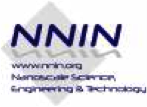Roger T. Howe
William E. Ayer Professor of Engineering
Faculty Director, Stanford Nanofabrication Facility

Director, National Nanotechnology Infrastrcture Network (NNIN)

Department of Electrical EngineeringPaul G. Allen Building, Room 114
420 Via Palou Mall,
Stanford University
Stanford, California 94305-4070
Phone: (650) 723-8030
Email: rthowe@stanford.edu
Table Of Contents:
- 1. Introduction to Microelectronics.
- Introduction. The Digital Inverter. Microelectronic Sensing Systems. Memories.
- 2. Semiconductor Physics and IC Technology.
- Pure Semiconductors. Generation, Recombination, and Thermal Equilibrium. Doping. Carrier Transport. Silicon Integrated Circuit Technology. C Resistors.
- 3. pn Junction and MOS Electrostatics.
- Applied Electrostatics. Carrier Concentration and Potential in Thermal Equilibrium. The PN Junction in Thermal Equilibrium. The PN Junction Under Reverse Bias. Depletion Capacitance. The MOS Capacitor: A First Pass. The Electrostatics of the MOS Capacitor. Capacitance of the MOS Structure.
- 4. The MOS Field-Effect Transistor.
- Introduction. Device Physics of MOSFET: Drain Current and Channel Charge. MOSFET Device Physics: A First Pass. MOSFET Device Physics: the Gradual Channel Approximation. MOSFET Circuit Models. Level I DC Model 35.
- 5. Digital Circuits Using Mos Transistors.
- Logic Concepts. Inverter Characteristics. MOS Inverter Circuits. CMOS Inverter Analysis. Static CMOS Logic Gates. Dynamic Logic. Pass Transistor Logic.
- 6. The pn Junction Diode.
- pn Diode Circuit Symbol and Terminal Characteristics. Integrated Circuit pn Diodes. The pn Junction Diode: A First Pass. pn Junction Diode Circuit Models. SPICE Model of the pn Junction Diode. Device Physics of the pn Junction Diode: Non-Equilibrium Minority Carrier Recombination. The Continuity Equation. Minority Carrier Distributions and Current Components: A Second Pass. Diode Applications.
- 7. The Bipolar Junction Transistor.
- Introduction. Bipolar Junction Transistor Physics: A First Pass. Reverse Active and Saturation Operating Regions. The Ebers-Moll Equations. Small-Signal Model of the npn BJT. BJT Device Physics. Lateral pnp Bipolar Transistor. SPICE Models for Bipolar Junction Transistors.
- 8. Single-State Bipolar/MOS Transistor Amplifiers.
- General Amplifier Concepts. Common-Emitter Amplifier-Introduction. Common-Source Amplifier-Introduction. Current Source Supplies. Common-Source Amplifier with Current Source Supply. Common-Emitter Amplifier with Current Source Supply. Improved Transconductance Amplifier with Emitter Degeneracy Resistor. Common-Base/Gate Amplifier.
- 9. Multistage Amplifiers.
- MOS Multistage Amplifiers-Small Signal Description. BiCMOS Multistage Amplifiers-Small Signal Description. BiCMOS Multistage Amplifiers-Small Signal Description. Direct-coupled Amplifiers-Large Signal Analysis. DC Voltage and Current Sources. A Two-Stage Transconductance Amplifier. Analysis of a BiCMOS Voltage Amplifier. Exercise and Problems.
- 10. Frequency Response.
- Bode Plots. Device Models for Frequency Response Analysis. Short-Circuit Current Gain. Voltage Gain Amplifiers. Frequency Response of Common-Collector/Drain Voltage Buffer. Common-Base/Gate Amplifier-Current Buffer. Frequency Response of Multistage Amplifiers.
- 11. Differential Amplifiers.
- General Concepts for Differential Amplifiers. Small Signal Analysis of Differential Amplifiers. Two-Port Model for the Differential Amplifier. Frequency Response of Differential Amplifiers. Differential Amplifiers with Single-Ended Outputs. Large Signal Analysis of Differential Amplifiers. Exercises and Problems.
- 12. Feedback and Operational Amplifiers.
- Introduction: Amplifier Models and the Feedback Concept. Frequency Response of Feedback Amplifiers. Large-Signal Benefits of Feedback. Practical Feedback Amplifiers. Integrated Operational Amplifiers. BiCOMS Operational Amplifiers.
- 13. MOS Memories.
- Memory Classification. MOS Memory Architecture. Memory Cells. Sense Amplifiers. Address Decoders and Buffers. SRAM Design Example. Exercises and Problems.
Monday/Wednesday/Friday Class Notes/Transparencies
Click on a PDF icon to download the file.
Tuesday/Thursday Class Notes/Transparencies
Click on a PDF icon to download the file.


No comments:
Post a Comment